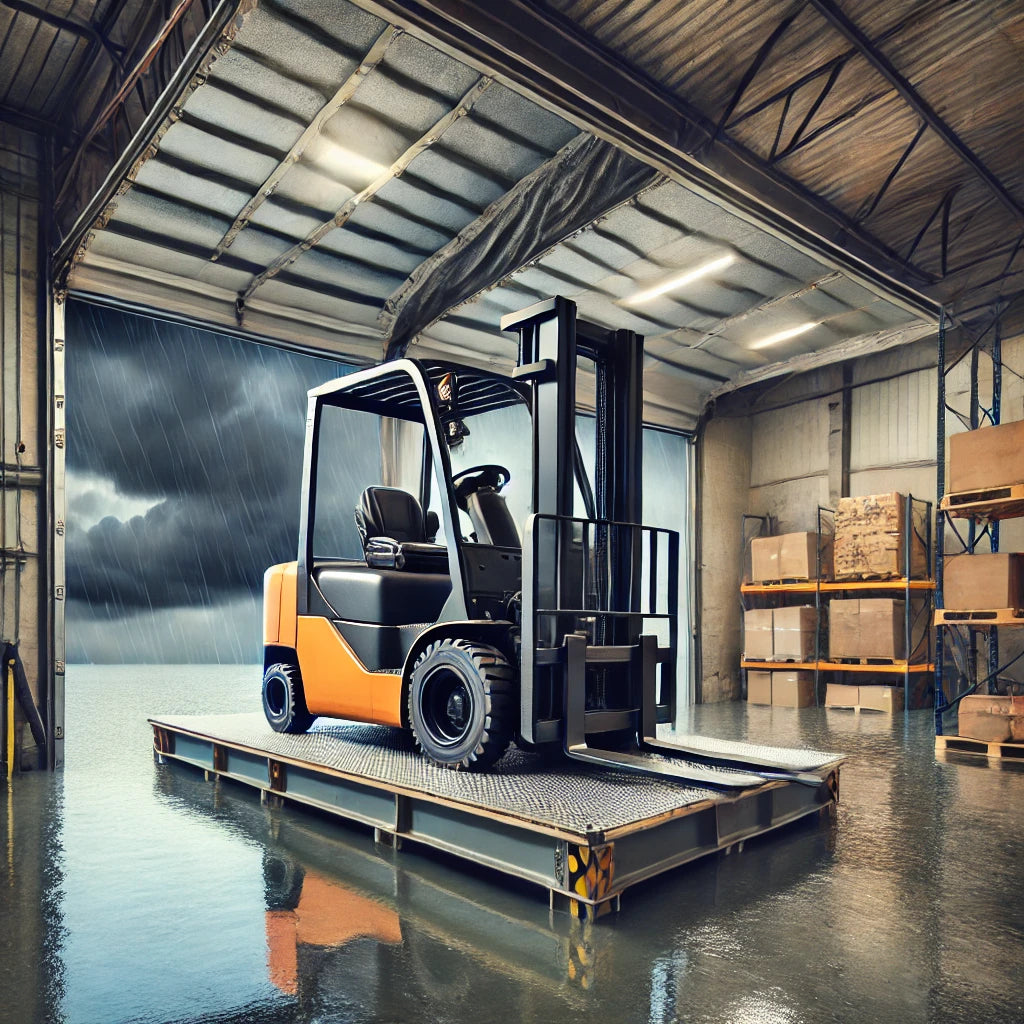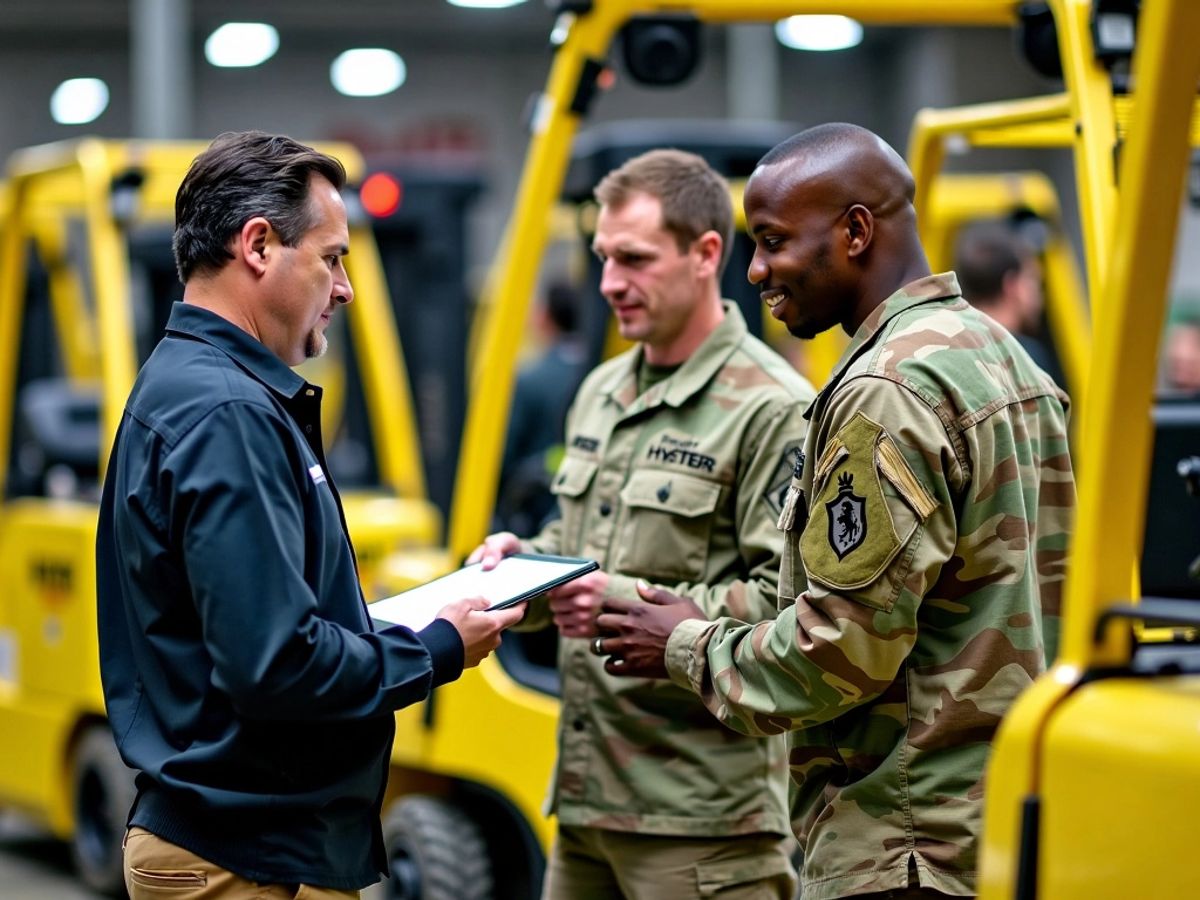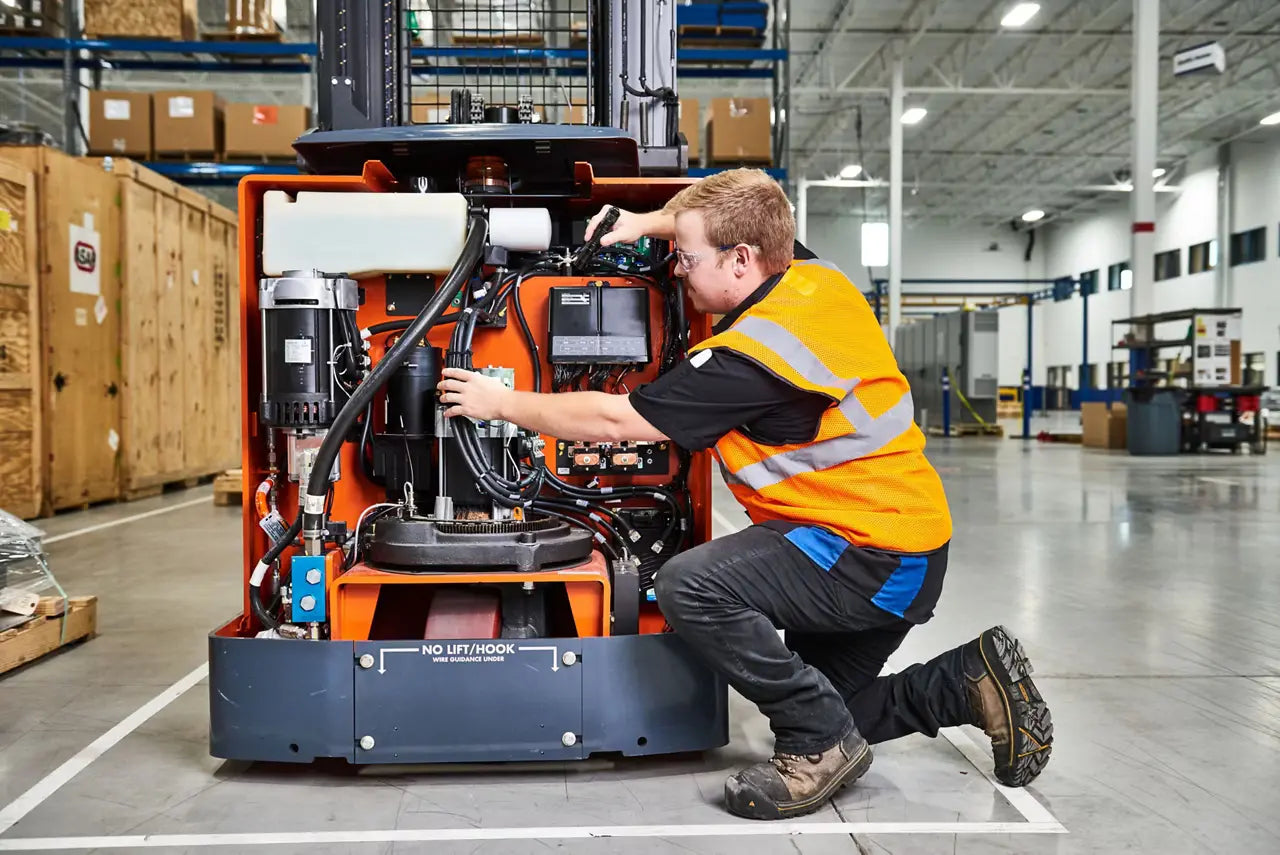Florida-Based AAA Forklift Prioritizes Hurricane-Preparedness and Forklift Repairs to Maintain Supply Chain Efficiency
As hurricane season intensifies in Florida, businesses that rely on forklifts to maintain their operations face the significant challenge of protecting vital equipment from devastating storm damage. With recent storms like Hurricane Helene causing widespread disruption and more storms on the horizon, it’s more important than ever for businesses to take proactive steps to safeguard their forklifts. AAA Forklift, a local leader in forklift maintenance and repair, understands the importance of protecting essential equipment and ensuring the supply chain remains operational in the wake of a disaster.
This guide covers essential steps to protect your forklifts and equipment during hurricanes, from pre-storm preparation to post-storm recovery. By following these best practices, you can prevent costly repairs, protect your assets, and ensure business continuity.
Preparation Prior to the Storm

With adequate warning before hurricanes, Florida businesses have a critical window of time to protect their forklifts and fuel containers. Here are the essential steps to take when preparing for an approaching storm:
1. Develop a Comprehensive Emergency Plan
A detailed emergency plan is key to safeguarding your forklifts and other essential equipment. This plan should outline specific procedures for relocating forklifts and protecting fuel storage. Assign roles to employees so that everyone knows their responsibilities in case of a storm. Conduct regular drills to ensure a swift and coordinated response.
2. Move Forklifts to Safety
When a hurricane is forecasted, make relocating your forklifts a top priority. Move them to a safe, elevated location—either to higher ground or to an indoor facility that’s less prone to flooding. This prevents floodwaters and storm surge from damaging critical components like electrical systems and hydraulics.
3. Protect Fuel Containers
Diesel and gas storage containers used for forklifts are particularly vulnerable during hurricanes. These containers must be properly sealed to prevent contamination from floodwaters or leaks that could pose a fire risk. Store fuel containers in an elevated, secure area away from flood zones. Ensuring that your fuel remains uncontaminated is crucial for resuming operations quickly after the storm passes.
4. Utilize Waterproof Covers
Invest in high-quality, waterproof covers for your forklifts. These covers should be designed to protect the engine, battery compartments, and other sensitive parts from rain and floodwaters. Make sure the covers fit securely and are fastened properly to prevent them from being blown off during the storm.
5. Install a Generator
Power outages can last days or even weeks after a hurricane. Installing a generator ensures your facility remains operational once the storm passes. Electric forklifts rely on charging stations, so having backup power is critical for keeping them functional. Before the storm arrives, test the generator to make sure it’s in working order and has enough fuel.
6. Elevate Forklift Charging Stations
If your forklifts are electric, make sure that charging stations are elevated above anticipated flood levels. This precaution helps protect electrical components from being submerged, reducing the risk of short circuits or damage that could lead to costly repairs.
7. Monitor Weather Updates
During hurricane season, stay informed by monitoring local weather updates. Advance warnings give you the time needed to implement your emergency plans and protect your forklifts. Start preparations as soon as a hurricane warning is issued, ensuring your equipment and facility are secure well before the storm arrives.
8. Secure Outdoor Items
High winds during hurricanes can turn loose objects into dangerous projectiles, which can damage forklifts and other equipment. Remove or secure any debris, outdoor items, or loose equipment that could become airborne during the storm. Consider anchoring forklifts to sturdy points to prevent them from being displaced by strong winds.
Protecting Your Forklift During the Storm
Once preparations are complete, there are several steps to take during the storm to minimize damage:
- Power Down and Disconnect: Before the storm hits, ensure that forklifts are powered down and batteries disconnected. This prevents potential electrical damage caused by power surges or water exposure.
- Seal Vulnerable Components: Use waterproof materials to cover and seal sensitive parts, such as battery terminals, engines, and hydraulic systems. This reduces the risk of water infiltrating critical components.
After the Storm: Inspection and Repairs
After the hurricane has passed, conducting a thorough inspection of your forklifts is critical to resuming operations safely and efficiently. AAA Forklift is ready to assist with post-storm repairs, ensuring your forklifts are restored to working order quickly.
1. Post-Hurricane Inspection
Once it’s safe to return to your facility, begin with a detailed inspection of your forklifts and the surrounding property. Check for water damage, signs of rust, and mud accumulation. Pay special attention to electrical components and hydraulic systems, which are most vulnerable to flooding. Look for fuel container leaks or contamination as well.
2. Drying Out the Facility and Equipment
If your facility has been flooded, open windows and doors to improve ventilation and dry out the area. Ensure forklifts are fully dried before attempting to start them. Even small amounts of moisture in the engine or electrical systems can cause long-term damage.
3. Contacting AAA Forklift for Repairs
AAA Forklift provides specialized post-hurricane services to repair forklifts that have sustained storm damage. Their technicians are trained to address waterlogged engines, electrical issues, and compromised hydraulics. By prioritizing businesses affected by hurricanes, AAA Forklift helps reduce downtime and restore operations quickly.
Long-Term Preparation and Future Protection
Preparation for future hurricanes should be ongoing. Implementing long-term solutions to protect your forklifts will minimize the risks of damage and ensure faster recovery after storms.
- Regular Maintenance: Routine forklift maintenance ensures that equipment remains in top condition, reducing the likelihood of storm-related failures. Schedule regular inspections with AAA Forklift to catch any issues before they worsen.
- Evaluate Emergency Plans: After each hurricane season, review your emergency plans and update them based on what worked well and what didn’t. This helps improve preparedness for future storms.
Summary
In hurricane-prone areas like Florida, protecting your forklifts and fuel containers is essential to preventing major disruptions to your business operations. By developing a comprehensive emergency plan, moving forklifts to higher ground, sealing and storing fuel containers properly, and utilizing waterproof covers, you can significantly reduce the risk of storm damage.
AAA Forklift offers the expertise and services needed to help businesses prepare for and recover from hurricanes. Their post-storm repairs and proactive maintenance services ensure that your forklifts remain operational, keeping your supply chain moving during and after the storm.
Call us @ (407) 695-4387 or email us @ info@aaaforklifts.com




Deja un comentario
Este sitio está protegido por hCaptcha y se aplican la Política de privacidad de hCaptcha y los Términos del servicio.